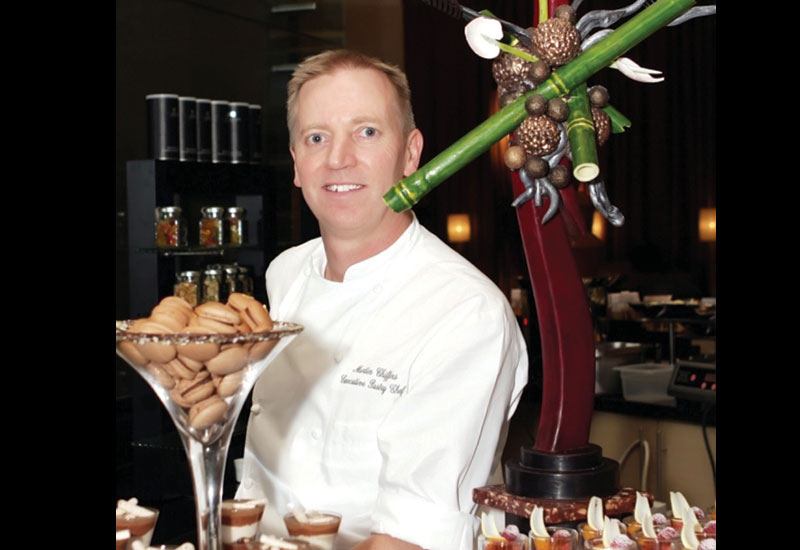Chefs agree, explaining there are certain criteria they have for purchasing chocolate products.
“In choosing a chocolate product, I normally check where the chocolate has been produced and the content of the cocoa in it,” says Kempinski’s Helmetag. “When those aspects are right, things like the sweetness and flavour follow.”
Meanwhile The Address’ Chiffers has established a preferred supplier partner for chocolate items.
“I normally select my favourite brand, Valrhona. The cocoa content varies from 32% to 100%, depending on the use of the chococolate — and each chocolate has a signature flavour depending on the beans used, the part of the world the beans come from and the blend,” he explains.

| Advertisement |
“I select the chocolate to match the desserts or cakes that I am preparing, as some chocolates might work better with fruits, for example, than other ingredients.”
But of course, whatever chocolatey goodies outlets produce must first and foremost appeal to the consumer, so market trends play a major role in what is created.
According to Chiffers, many people in the region are “still unsure of the health benefits of chocolate and often ask for low-fat options”.
“There are also requests for sugar-free chocolate,” he observes.
And Middle East consumers certainly aren’t afraid to ask for what they want — which can be a benefit for those willing to accommodate them, as Swiss International’s Hutmacher notes.
“Lots of requests do come our way for tailored chocolates; differentiation is a major draw factor for customers,” he says.
Meanwhile EMF Emirates general manager Pierre Feghali says tastes and trends vary in each country around the MENA region.
“The GCC consumers are quite similar, with nationals having a tendency towards milk chocolate, whereas more expats will prefer dark,” Feghali observes.
“The UAE for instance, with the presence of a large European community, has the region’s highest sales of dark chocolate — especially in Dubai, where there is also a major concentration of hotels, with chefs who use mainly dark chocolate in dessert creation.
“Because of the relatively high purchasing power of GCC residents, the ranges we sell to this area are mainly high end, gourmet products from the Barry Callebaut line,” he continues.
But even in the strong Middle East market, there are nevertheless chocolate-selling anomalies.
“Syria and Iran have their own specificity,” explains Feghali.
“Due to a total restriction, or an implementation of extremely high customs duty (50% in Syria, 70% in Iran), the importing of finished chocolate products is extremely low.
“Consequently, the market in these countries is predominantly focused on locally produced chocolate goods,” he continues.
“That is why our sales in these two markets consist mainly of semi-finished cocoa products — cocoa powder, cocoa mass and cocoa butter — on which there is little customs duty, sold to industrials who produce their own bulk chocolate that they sell to chocolatiers and pastry shops to produce the end products.”
It seems that although chocolate is a strong market in the Middle East, it is still not as developed across the board as other parts of the world.
But with chefs and suppliers championing the cause, challenging consumer tastes and getting creative with cocoa, there is no doubt the chocolate market is on solid ground.









 Search our database of more than 2,700 industry companies
Search our database of more than 2,700 industry companies









